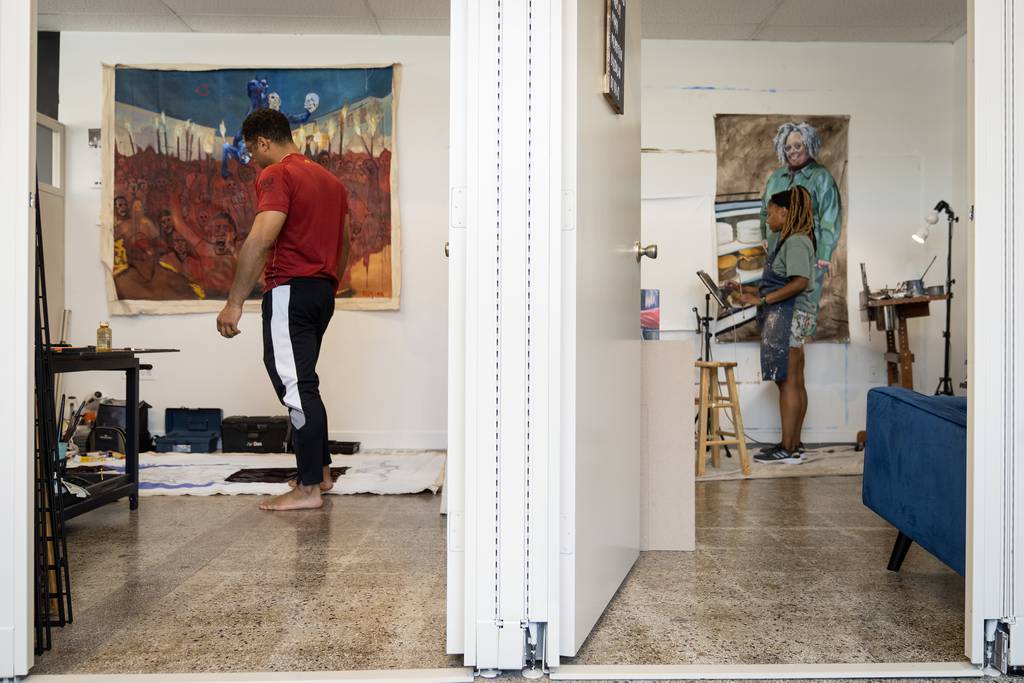Chicago’s Driehaus Foundation approved Monday evening $1 million in funding for a Landmarks Illinois program that revives historic buildings on the city’s South and West sides.
The move will help fulfill the vision of philanthropist Richard Driehaus, the founder of Driehaus Capital Management who died in 2021, that historic preservation can both save beautiful buildings and develop underserved communities, according to Anne Lazar, the foundation’s executive director.
“This is an opportunity to continue Richard’s long legacy of support for historic preservation that’s done in a meaningful way,” she said. “We want to sustain and protect Chicago’s historic structures, but the other part of that equation is to spur economic development.”
The $1 million will allow Landmarks Illinois to greatly expand and sustain an already successful low-interest loan program, said Bonnie McDonald, president and CEO of Landmarks Illinois. The nonprofit established a $153,000 fund several years ago, lending most of it to the Greater Chatham Initiative for its redevelopment of an outdated historic building at 735 E. 79th St. into “Artists on the 9,” a work and gallery space for neighborhood artists.
“Our mission is to redefine what people think of as historic preservation, but we decided to start small and prove out our strategy,” McDonald said. “Now, we’re going to be able to go from making essentially one loan at a time to being able to make two to five loans every year.”
GCI opened Artists on the 9 in 2022 and brought in storyboard artist Kristen Williams and visual artist Anthony Olusina Schleicher as its first artists-in-residence. It also launched other development projects nearby on 79th Street, including Mahalia Jackson Court, a public plaza for the arts, all meant to transform the blocks between Cottage Grove Avenue and State Street into a cultural destination.
“People had a hard time envisioning an art gallery on 79th Street, but the demand was there,” said GCI Executive Director Nedra Sims Fears. “And artists attract other artists, so we see Artists on the 9 as a beachhead for our plans to add even more cultural amenities to 79th Street.”
Bringing new life into the space will also help heal a shocking community trauma, she added. In 2014, Dr. Betty Howard, a special-education teacher at Gwendolyn Brooks College Preparatory Academy, was fatally wounded at 735 E. 79th St., then a realty office, in what appeared to be a random shooting, as she dropped off some documents.
“People were surprised because Chatham was supposed to be safe,” Fears said.
The Driehaus Foundation earlier this year awarded $2.3 million to the nonprofit Preservation Chicago, $1.43 million to the Better Government Association and $1.5 million to Arts Work Fund. The foundation also supports urban gardens and farms, the preservation of the historic Pullman neighborhood and many other groups, all reflecting Richard Driehaus’ passion for the built environment, classical architecture, community development, investigative journalism and arts and culture, Lazar said.
“Landmarks Illinois’ work falls squarely into that group,” she said. “It’s about more than the brick and mortar of a building, and more than a financial investment, it’s also an investment in that community and its residents.”
McDonald said applicants must show how a proposed historic restoration will bring in amenities and services desired by residents and improve the community’s quality of life, whether through job creation, improved housing, safer streets, fostering small businesses or creative place-making like Artists on the 9.
“We don’t want our funds to be a force for displacement,” she said.

In return, Landmarks Illinois will allow groups to repay loans at their own pace, and offer technical assistance, whether it means finding a mason who knows how to repair the walls of historic buildings or helping secure further funding through state or federal historic tax credits.
“These are not transactions for us,” McDonald said. “We are forging long-term partnerships.”
GCI has already repaid its loan from Landmark Illinois, said Fears, which along with other funding from the city’s Department of Planning and Development and the nonprofit Pangea Cares Foundation, allowed it to fill the interior with natural light from new windows, raise the ceilings, restore the original floors and replace the aging electrical and HVAC systems.
“It’s a beautiful old building, but it had not been rehabbed since the 1980s, had gotten run-down and now it’s a very pleasant space to work in,” Fears said.
Landmark Illinois also helped GCI find the right windows and properly restore the brickwork, she added.
“The other construction lenders give you money, but not expertise.”







